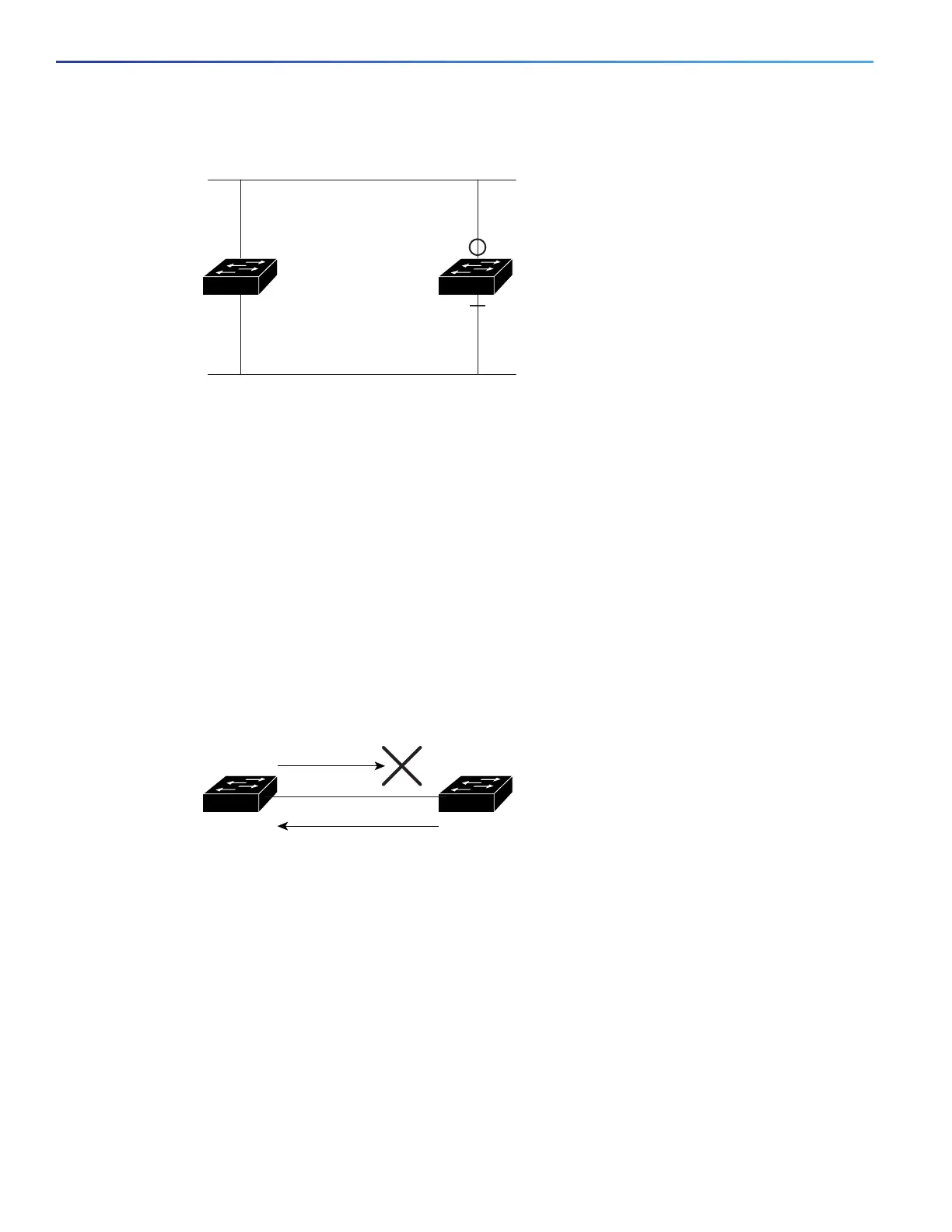338
Configuring MSTP
Information About Configuring MSTP
Figure 40 Standard and Prestandard Switch Interoperation
Note: We recommend that you minimize the interaction between standard and prestandard MST implementations.
Detecting Unidirectional Link Failure
This feature is not yet present in the IEEE MST standard, but it is included in this Cisco IOS release. The software checks
the consistency of the port role and state in the received BPDUs to detect unidirectional link failures that could cause
bridging loops.
When a designated port detects a conflict, it keeps its role, but reverts to discarding state because disrupting connectivity
in case of inconsistency is preferable to opening a bridging loop.
Figure 3 on page 6 illustrates a unidirectional link failure that typically creates a bridging loop. Switch A is the root switch,
and its BPDUs are lost on the link leading to switch B. RSTP and MST BPDUs include the role and state of the sending
port. With this information, switch A can detect that switch B does not react to the superior BPDUs it sends and that
switch B is the designated, not root switch. As a result, switch A blocks (or keeps blocking) its port, preventing the
bridging loop.
Figure 41 Detecting Unidirectional Link Failure
Interoperability with IEEE 802.1D STP
A switch running MSTP supports a built-in protocol migration mechanism that enables it to interoperate with legacy IEEE
802.1D switches. If this switch receives a legacy IEEE 802.1D configuration BPDU (a BPDU with the protocol version set
to 0), it sends only IEEE 802.1D BPDUs on that port. An MSTP switch also can detect that a port is at the boundary of a
region when it receives a legacy BPDU, an MSTP BPDU (Version 3) associated with a different region, or an RSTP BPDU
(Version 2).
However, the switch does not automatically revert to the MSTP mode if it no longer receives IEEE 802.1D BPDUs because
it cannot detect whether the legacy switch has been removed from the link unless the legacy switch is the designated
switch. A switch might also continue to assign a boundary role to a port when the switch to which this switch is connected
has joined the region. To restart the protocol migration process (force the renegotiation with neighboring switches), use
the clear spanning-tree detected-protocols privileged EXEC command.
Segment X
MST
Region
Segment Y
92721
Switch A
Switch B
Inferior BPDU,
Designated + Learning bit set
Superior
BPDU
Switch
A
Switch
B
92722

